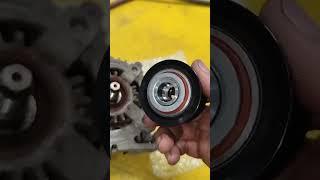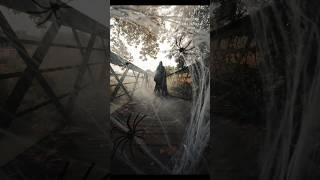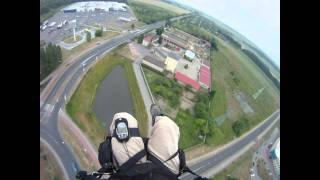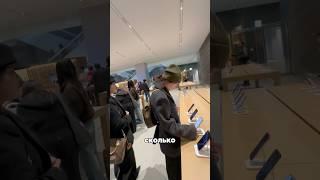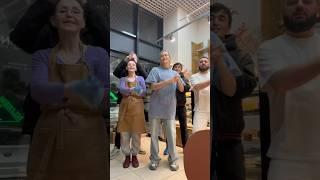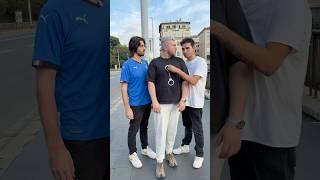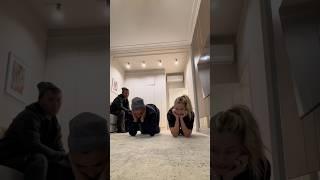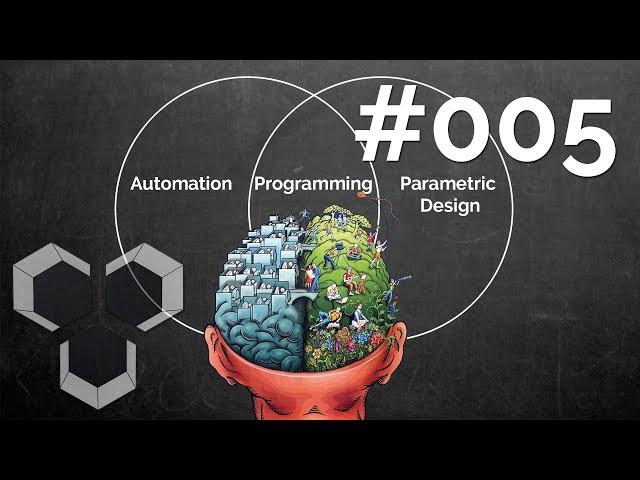
ProArchitect #005 - Parametric DESIGN? Not really...
Комментарии:

Can't agree 100% with the distinction, but clearly the potential of the computational processes is perfectly stated.
Ответить
It's very important to highlight that the early discussion about parametric design and digital fabrication applied to architecture came from developed countries. Aesthethics transformations based on fluidity and free-form surfaces were much more aligned to a narrow niche of projects, such as cultural buildings, civic centers, stadiums,. Nowadays this discussion is more widespread and matured but it should also be shifted towards common buildings, specially in non-developed countries. In such places there is usually a lack of a developed building industry structure for various reasons, and parametric design is always bogged down by those conditions. Therefore designs are almost always limited to this parametric automation, and never accomplishing the true cycle of parametric design, file to factory, digital fabrication and assembly.
Architectural typology is a topic that was heavily debated specially by Argan, which thought of it as an instrument for design by classifying buildings by their form. Do you see any kind of proximity with parametric automation of the representational process? Could this practice be considered a transition between theories?

superlike
Ответить
among all the 'digital architects' out there you are someone who makes sense. thank you.
Ответить
wow o_O
Ответить
Any chance of a long form video/podcast? I would really like to hear you go deep on some of these topics that you mentioned.
I will also start supporting your vids through patreon. Please keep making more!

Thank you for sharing your ideas and thoughts about the current trend in parametric architecture. We architects definitely need more research material and clarity when it comes to designing a structure that is achievable in reality. Although parametric architecture could be the future as it has the possibilities of achieving unthinkable designs and helps create interesting spaces surely there could be downsides to it as well as it is still being developed. With the help of like minded design thinkers and researchers we can always move forward together to build something amazing.
Cheers! Keep it coming! <3

I rolled dice for a second semester design studio to determine facade 'features' in some retirement housing to give some individuality and just to break the uniformity up. 1987 or so… proto-parametric design! In a the era prior to AutoCad Release 10 even.
Good thoughtful analysis here, well done PA.

Really interesting videos!
I share your channel in my social media

You can't say completely parametric design is not good, Remember parametric design is also a part of nature.we couldn't design parametric like nature this is true, but hare I with u parametric design softwares are not good for a design space
Ответить
hello. i find your videos really helpful, but i'm little bit unsecure should i concentrate on u'r content, or search for more reliable. the reason is amount of subscribers and likes that are very few. i guess it can be caused just because of less popularity of subject, but anyway, it would be nice if you could give me honest explanation on should i dive deeper on your videos and other topics or, i don't know,, i know it sound stupid, i'm just beginner but really willing to give whole of me to architecture, and i'm aware of wasting time. + i have 0 clue for coding unfortunately, so i'm unsecure for that too :/ ,, what should i do ? please reply. even that will encrease my confidence. thanx
Ответить
I agree!🙌
Ответить
I love the Bach in the background.
Ответить
Fantastic discussion. What is your opinion of utilizing parametric design in the pursuit of generative art ?
Ответить
Wow, this video is so nice, it's exactly i had ask me.
Ответить
So useful knowledge thanks a lot
Ответить
Proarchitect is a life saver....... I am in my second year in architecture school and I have been using grasshopper to make "cool" stuff that I know is not pragmatic. But thanks to you I have repented of my sins.
Ответить
I totally agree with you, this should be just another tool to make our lifes easier than just use parametric design as a goal
Ответить
You are talking about "chaotic" , randomness is not chaotic.
Ответить
I watched your video today. I have a question how do you think about generative design? Do you think Generative design is under the realm of parametric design? For example, I want to design a shelter that can block direct sunlight and maximum diffuse light in a certain location. Based on the sun direction and other restrictions such as rain, climate, grasshopper maybe can give me the shape of the shelter through grasshopper honeybee (parameter of sun direction) and genetic algrithem. Do you think this is a parametric design or not?
Ответить
Makes sense
Ответить
<3
Ответить
Wait hold it, hold it...
Parametric design is a design with related variables where a design is affected by initial conditions like a classical differential equation.
This happened since Brunelleschi. Parametric design is older, much older than computers. It's a mindset.

I LOVE YOU MAN...you say it all correctly!...architect/designer here!
Ответить
totally agree with him an architectural form should be justifiable.....
Ответить
I have been using grasshopper for more than 10 years in my job and I totally agree about your point of view. I see parametric design as a tool in architecture to make an idea feasible, to optimize the design for a certain purpose. As architects we select the parameters because we need them to execute something for a certain reason, or we have some kind of intuition first that drives the process in a certain way, and may be later on we can find something valuable that we were not expecting, but in the end, without a purpose, parametric design won't help us at all. Thank you for sharing your insights of this controversial topic!
Ответить
Top quality lectures sir. Subscribed 👌
Ответить
Excellent explanation Milos, to clarify the real meaning and purpose of parametric design, thanks
Ответить
Where is this airport?
Ответить
While I don't deny the point, I think all process of design is an act of discovery. And while you argue that unless you dont know what you are going for, only then can you achieve a truly parametric process, I say that all design is guided by intuition as archetypes already exists for the things we wanted to do. Like how you set the parameters for the bridge suggest that you already had an idea in mind regardless if you drew it in paper or not. But I would also argue that a design idea is never fully formed. So in a way, the forms that manifests in the parametric process would always be an act of "designing". Yes, Fuksas knows its going to be a blobby shape with hexagonal panels, but the size, density, visual complexity, can only be discovered through the parametric process, and adjusting the "pre determined" sliders materializes the act of designing.
Ответить





